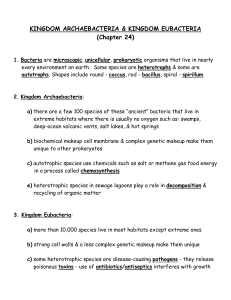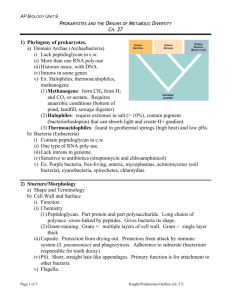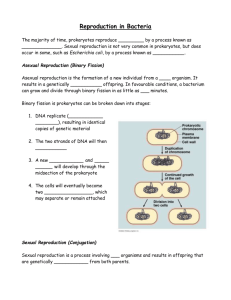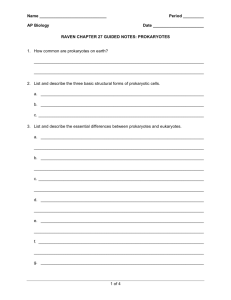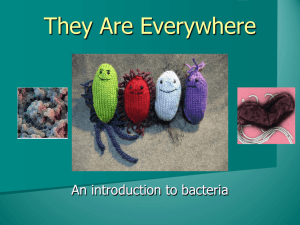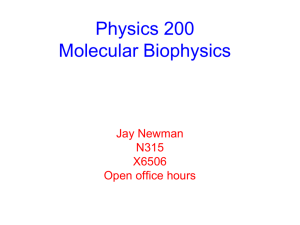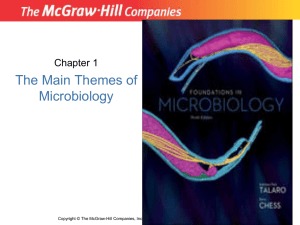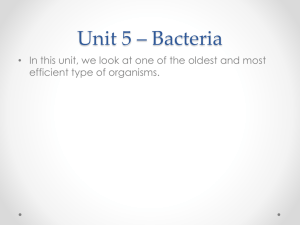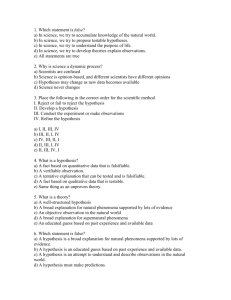Kingdoms Archaebacteria and Eubacteria
advertisement
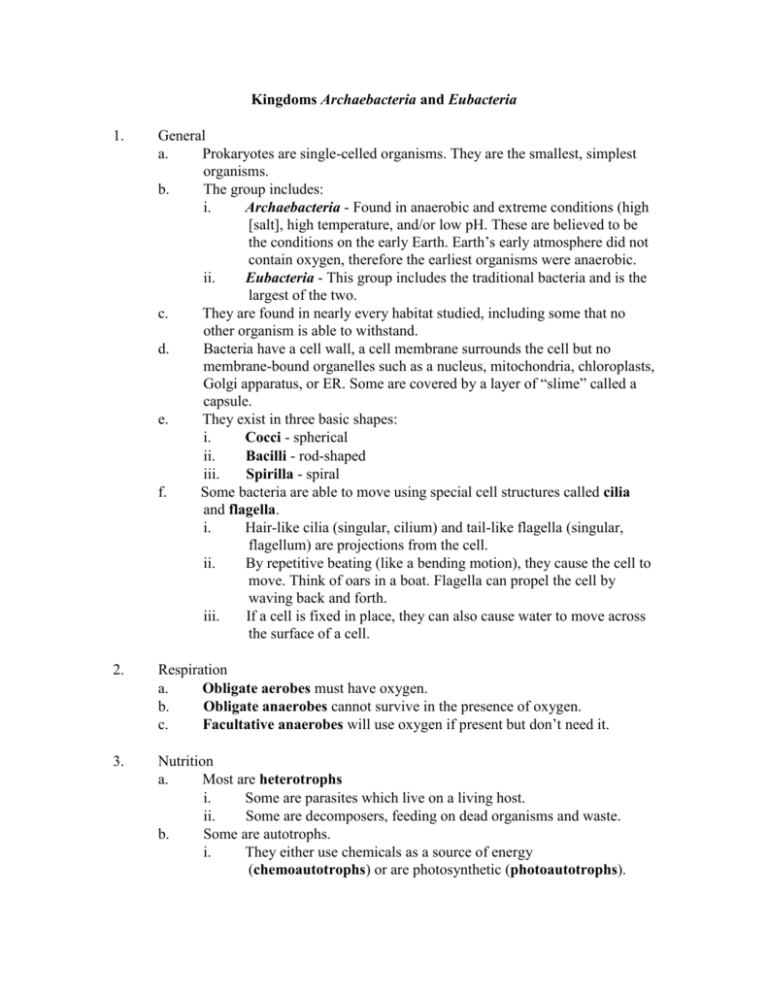
Kingdoms Archaebacteria and Eubacteria 1. General a. Prokaryotes are single-celled organisms. They are the smallest, simplest organisms. b. The group includes: i. Archaebacteria - Found in anaerobic and extreme conditions (high [salt], high temperature, and/or low pH. These are believed to be the conditions on the early Earth. Earth’s early atmosphere did not contain oxygen, therefore the earliest organisms were anaerobic. ii. Eubacteria - This group includes the traditional bacteria and is the largest of the two. c. They are found in nearly every habitat studied, including some that no other organism is able to withstand. d. Bacteria have a cell wall, a cell membrane surrounds the cell but no membrane-bound organelles such as a nucleus, mitochondria, chloroplasts, Golgi apparatus, or ER. Some are covered by a layer of “slime” called a capsule. e. They exist in three basic shapes: i. Cocci - spherical ii. Bacilli - rod-shaped iii. Spirilla - spiral f. Some bacteria are able to move using special cell structures called cilia and flagella. i. Hair-like cilia (singular, cilium) and tail-like flagella (singular, flagellum) are projections from the cell. ii. By repetitive beating (like a bending motion), they cause the cell to move. Think of oars in a boat. Flagella can propel the cell by waving back and forth. iii. If a cell is fixed in place, they can also cause water to move across the surface of a cell. 2. Respiration a. Obligate aerobes must have oxygen. b. Obligate anaerobes cannot survive in the presence of oxygen. c. Facultative anaerobes will use oxygen if present but don’t need it. 3. Nutrition a. Most are heterotrophs i. Some are parasites which live on a living host. ii. Some are decomposers, feeding on dead organisms and waste. b. Some are autotrophs. i. They either use chemicals as a source of energy (chemoautotrophs) or are photosynthetic (photoautotrophs). 4. Reproduction a. Prokaryotes have a single circular chromosome attached to the inside of the plasma membrane. b. Asexual reproduction i. Prokaryotes reproduce by simply splitting in two in a process called binary fission. ii. The DNA is copied and the cell divides into two identical cells. c. Sexual reproduction i. Sexual reproduction combines genes from two different individuals and increases variation. Prokaryotes that do not technically reproduce sexually can still mix genes with one another. ii. Conjugation - Two cells join briefly and one cell donates some DNA (called a plasmid) to the other one. Sometimes part of the cell’s chromosome is donated as well. iii. Transformation - Bacteria can also pick up pieces of DNA from the environment. iv. Transduction - sometimes viruses transfer pieces of DNA from one cell to another. d. Endospores i. Some bacteria form endospores when environmental conditions become unfavorable. ii. An endospores contains the DNA and a small amount of cytoplasm enclosed in a tough cell wall. They are resistant to extremes in temperature, drying, and harsh chemicals. e. Mutation is a large source of genetic diversity in bacteria. 5. Bacteria and Disease a. Bacteria cause disease in one of two ways i. Damage cells and tissues by breaking down the cells for food. For example, Mycobacterium tuberculosis destroys lung tissue. ii. Releasing toxins that interfere with the normal functioning of the host. For example, Corynebacterium diphtheriae releases toxins into the bloodstream where they cause breathing difficulty, heart failure, paralysis, and death. b. Preventing and treating bacterial diseases i. Vaccines - Many bacterial diseases can be prevented by stimulating the immune system with a vaccine. Most vaccines are small doses of live bacteria, killed bacteria, or parts of bacterial cells which cause an immune response. If you are exposed to that bacterium again in the future, your immune system will launch a strong response to it. ii. Antibiotics - are compounds that interfere with the normal growth of bacteria.

